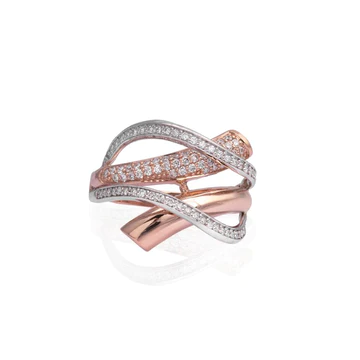In recent years, lab grown diamond rings have gained popularity as a sustainable and ethical alternative to traditional mined diamonds. These exquisite pieces not only offer the same brilliance and beauty as their natural counterparts but also come with the assurance of ethical sourcing and environmental responsibility. In this article, we’ll explore the world of lab-grown diamond rings, their benefits, and why they are becoming the preferred choice for modern consumers.
Understanding Lab Grown Diamonds
Lab-grown diamonds, also known as synthetic or cultured diamonds, are created in controlled laboratory environments using advanced technological processes that mimic the natural conditions under which diamonds form in the Earth’s crust. These diamonds have the same chemical composition, physical properties, and optical characteristics as mined diamonds, making them indistinguishable to the naked eye.
Benefits of Lab Grown Diamond Rings
Ethical Sourcing: Unlike traditional mined diamonds, lab-grown diamonds are produced without the environmental and ethical concerns associated with diamond mining, such as habitat destruction, human rights violations, and conflict financing.
Sustainability: Lab grown diamond require significantly less energy and water to produce compared to mined diamonds, making them a more environmentally sustainable option.
Cost-Effectiveness: Lab grown diamonds are typically priced lower than mined diamonds of comparable quality, allowing consumers to enjoy the beauty and luxury of diamonds at a more accessible price point.
Innovation and Customization: The controlled environment of lab-grown diamond production allows for innovative techniques and customization options, giving consumers the freedom to create unique and personalized ring designs.
Choosing the Perfect Lab Grown Diamond Ring
When selecting a lab grown diamond rings there are several factors to consider:
Cut: Choose a cut that maximizes the diamond’s brilliance and fire, such as round brilliant, princess, or cushion cut.
Clarity: Look for diamonds with minimal inclusions and blemishes for optimal clarity and brilliance.
Color: Decide on the diamond’s color grade based on personal preference and style, ranging from colorless to fancy colored diamonds.
Carat Weight: Determine the desired carat weight based on budget and design preferences, keeping in mind that larger diamonds may command higher prices.
Conclusion
Lab-grown diamond rings offer a compelling blend of luxury, ethics, and sustainability, making them an ideal choice for today’s conscientious consumers. With their exquisite beauty, ethical sourcing, and environmental responsibility, lab-grown diamond rings are poised to redefine the future of fine jewelry.

